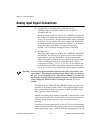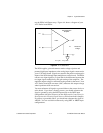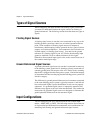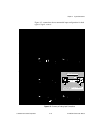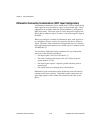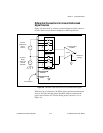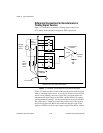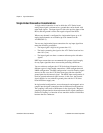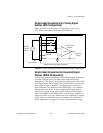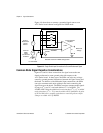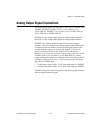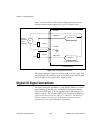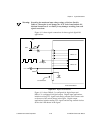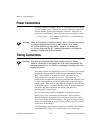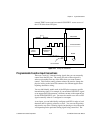
Chapter 4 Signal Connections
AT-MIO/AI E Series User Manual 4-24
National Instruments Corporation
Single-Ended Connection Considerations
A single-ended connection is one in which the AT E Series board
analog input signal is referenced to a ground that can be shared with
other input signals. The input signal is tied to the positive input of the
PGIA, and the ground is tied to the negative input of the PGIA.
When every channel is configured for single-ended input, up to 16
analog input channels are available (up to 64 channels on the
AT-MIO-64E-3).
You can use single-ended input connections for any input signal that
meets the following conditions:
• The input signal is high level (greater than 1 V).
• The leads connecting the signal to the AT E Series board are less
than 10 ft (3 m).
• The input signal can share a common reference point with other
signals.
DIFF input connections are recommended for greater signal integrity
for any input signal that does not meet the preceding conditions.
You can software configure the AT E Series board channels for two
different types of single-ended connections—RSE configuration and
NRSE configuration. The RSE configuration is used for floating signal
sources; in this case, the AT E Series board provides the reference
ground point for the external signal. The NRSE input configuration is
used for ground-referenced signal sources; in this case, the external
signal supplies its own reference ground point and the AT E Series
board should not supply one.
In single-ended configurations, more electrostatic and magnetic noise
couples into the signal connections than in differential configurations.
The coupling is the result of differences in the signal path. Magnetic
coupling is proportional to the area between the two signal conductors.
Electrical coupling is a function of how much the electric field differs
between the two conductors.



